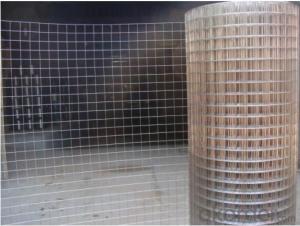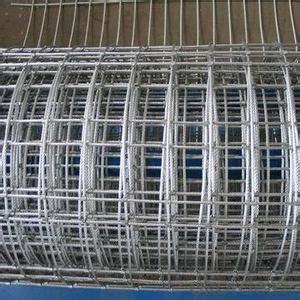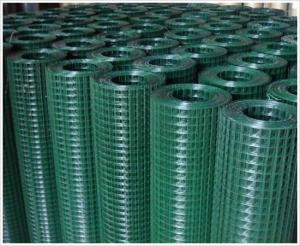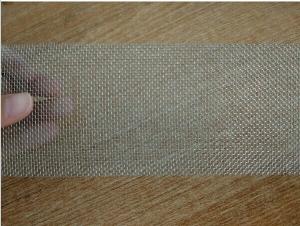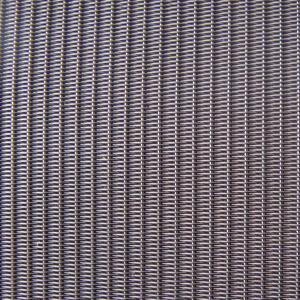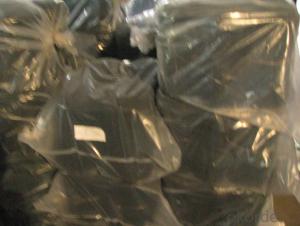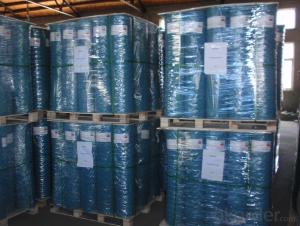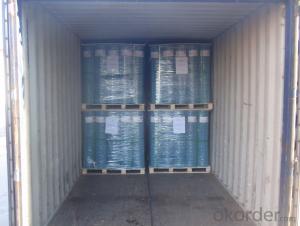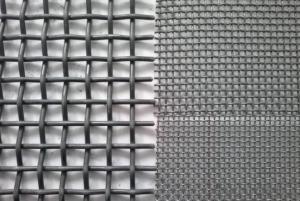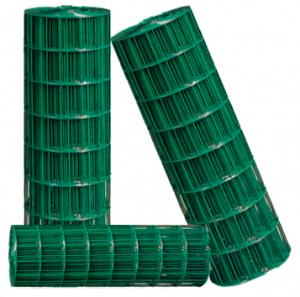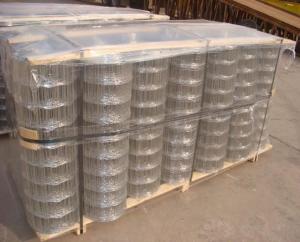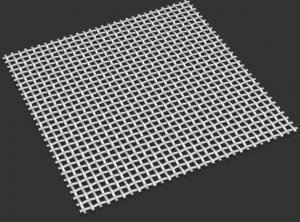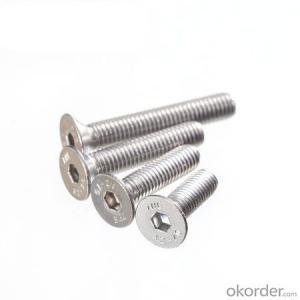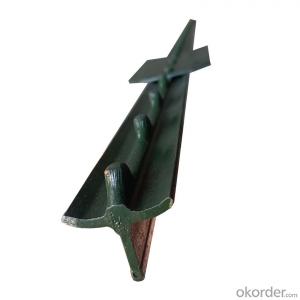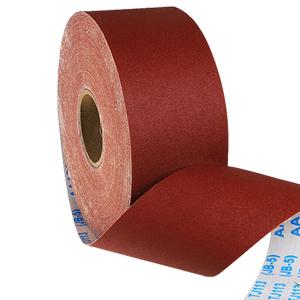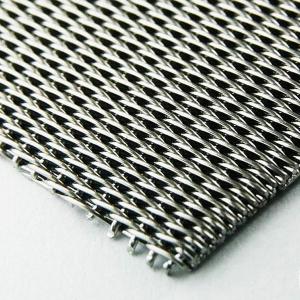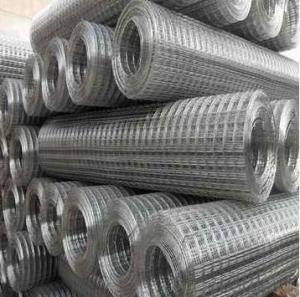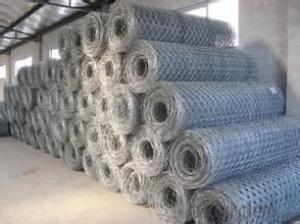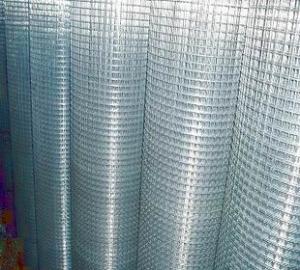Welded Wire Mesh in Building Construction -1/2 X 1
- Loading Port:
- Tianjin
- Payment Terms:
- TT or LC
- Min Order Qty:
- 50 roll
- Supply Capability:
- 5000 roll/month
OKorder Service Pledge
OKorder Financial Service
You Might Also Like
Introduction of Welded Wire Mesh
Welded Wire Mesh is made of by high quality galvanized wire, Low carton steel wire, stainless steel wire, iron wire, Galvanized steel wire, PVC coated iron wire in blue, green, yellow and other colors.
Application of Welded Wire Mesh
Galvanized welded wire mesh, PVC coated welded wire mesh for garden, feeding agriculture, fishing, poultry, mine field, lawn cultivation, and profession’s guard, decorate machine protection. Special welded wire mesh, (Heavy)welded wire mesh panel service as fencing mesh for transportation industry, construction a agriculture.
Surface treatment of of Welded Wire Mesh
a. Black (mild steel wire)
b. Electro galvanized, (galvanized before welding, galvanized after welding)
c. Hot dip galvanized, (galvanized before welding, galvanized after welding)
d. Pvc coated welded wire mesh, (black wire mesh then pvc coated, electro gal. then pvc coated, hot dip gal. the pvc coated)
Advantage of Welded Wire Mesh
Our welded wire mesh has strong corrosion-resisting and oxidation-resisting with good quality and rock bottom price.
Packing of Welded Wire Mesh
1. Waterproof paper then PVC shrinking Film
2. PVC shrinking film only
3. Black waterproof paper only
4. Waterproof paper then metal/wooden pallet
5. Plastic film then carton
(Also as your request. )
Pictures of Welded Wire Mesh
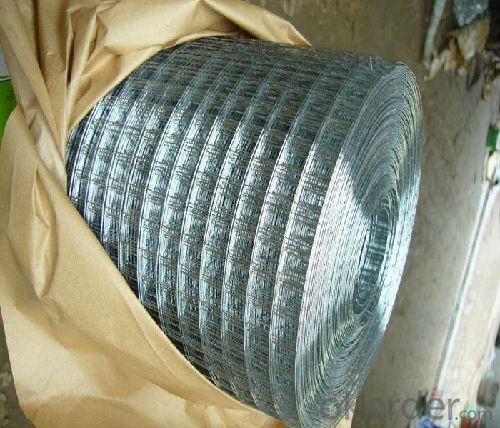
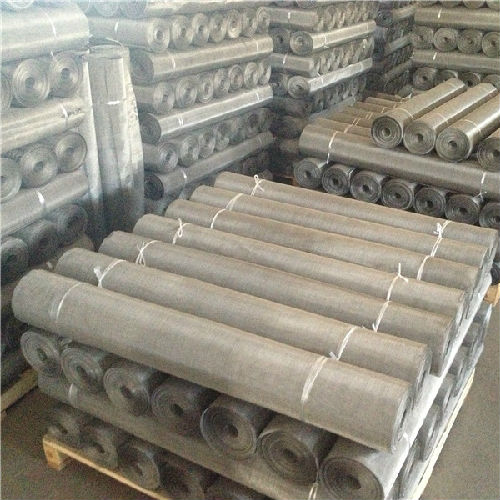
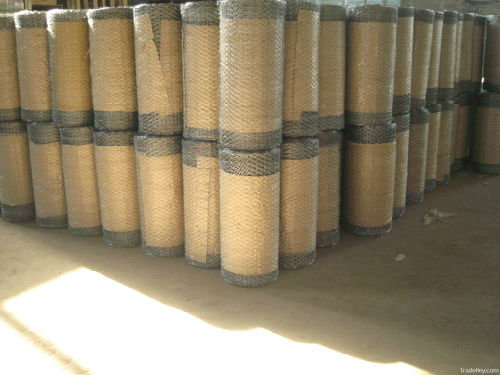
Specification of Welded Wire Mesh
Standard Welded Wire Mesh (in 30m length, Width of 0.5m-1.8m) | ||
Mesh | Wire Gauge (BWG) | |
Inch | MM | |
1/4" x 1/4" | 6.4mm x 6.4mm | 22-24 |
3/8" x 3/8" | 10.6mm x 10.6mm | 19-22 |
1/2" x 1/2" | 12.7mm x 12.7mm | 16-23 |
5/8" x 5/8" | 16mm x 16mm | 18-21, |
3/4" x 3/4" | 19.1mm x 19.1mm | 16-21 |
1" x 1/2" | 25.4mm x 12.7mm | 16-21 |
1-1/2" x 1-1/2" | 38mm x 38mm | 14-19 |
1" x 2" | 25.4mm x 50.8mm | 14-16 |
2" x 2" | 50.8mm x 50.8mm | 12-16 |
1/4" x 1/4" | 6.4mm x 6.4mm | 12-16 |
Welded Fencing Mesh (in 30m Length, Width of 0.5m -1.8m) | ||
Mesh | Wire Gauge (BWG) | |
Inch | MM | |
2" x 3" | 50mm x 75mm | 1.65-2.5mm |
3" x 3" | 75mm x 756mm | 1.65-2.75mm |
2" x 4" | 50mm x 100mm | 2.1-2.9mm |
4" x 4" | 100mm x 100mm | 2.0mm,2.5mm |
FAQ
We have organized several common questions for our clients,may help you sincerely:
1. How about your company?
A world class manufacturer & supplier of welded wire mesh and is one of the large-scale professional investment welded wire mesh bases in China. Annually more than 1000 containers of welded wire mesh are exported to markets in Europe, America and Japan.
2. What is the storage condition?
The welded wire mesh should be stored at room temperature and kept from wet and heat source.
3. How to guarantee the quality of the products?
We have established the international advanced quality management system,every link from raw material to final product we have strict quality test;We resolutely put an end to unqualified products flowing into the market. At the same time, we will provide necessary follow-up service assurance.
4. How long can we receive the product after purchase?
In the purchase of product within four working days, we will arrange the factory delivery as soon as possible. The specific time of receiving is related to the state and position of customers. Commonly 7 to 10 working days can be served.
- Q:What is the standard size of steel wire mesh?
- The standard size of steel wire mesh can vary depending on its intended use and the specific requirements of the industry. Generally, the size of steel wire mesh is measured in terms of mesh count or opening size. Mesh count refers to the number of wires per linear inch, while opening size refers to the distance between adjacent wires. In construction and industrial applications, the standard size of steel wire mesh can range from 4 mesh to 400 mesh, with different opening sizes available. Smaller mesh sizes are typically used for finer filtration or sieving purposes, while larger mesh sizes are commonly used for reinforcement, fencing, or industrial applications like concrete reinforcement. It is important to note that different industries may have their own standards for steel wire mesh sizes, based on their specific requirements and regulations. Therefore, it is always advisable to consult the relevant industry standards or guidelines for accurate and precise information regarding the standard size of steel wire mesh in a particular application or industry.
- Q:What are the weight and density of steel wire mesh?
- The weight and density of steel wire mesh differ based on the particular wire type and thickness used. Typically, low carbon steel or stainless steel wires are utilized in the production of steel wire mesh. The weight of steel wire mesh is commonly quantified in pounds per square foot (PSF) or kilograms per square meter (Kg/m²). The density of steel wire mesh is influenced by the density of the steel material itself, which is approximately 7.85 grams per cubic centimeter (g/cm³) for low carbon steel and slightly varies for stainless steel, depending on the grade. To determine the density of steel wire mesh, the weight is divided by the mesh's volume. The volume is determined by multiplying the wire mesh's thickness by the area it covers. For precise weight and density measurements of specific steel wire mesh products, it is imperative to consult the manufacturer's specifications or seek the advice of a materials engineer who can provide accurate calculations based on the wire mesh's specific type and dimensions.
- Q:What are the different wire mesh ratios available in steel wire mesh?
- Steel wire mesh comes in various wire mesh ratios, each designed for different purposes and applications. Common ratios include 2:2, 2:3, 2:4, and 3:3. In the wire mesh ratio, the first number denotes the number of horizontal wires per inch, while the second number represents the number of vertical wires per inch. For instance, a 2:2 wire mesh ratio means there are two horizontal and two vertical wires per inch. The selection of the wire mesh ratio depends on the project's specific requirements. A 2:2 ratio is frequently utilized for general purposes, where a balance of strength and flexibility is necessary. This ratio is commonly found in fencing, screening, and light-duty applications. On the other hand, a 2:3 ratio offers increased strength and rigidity. It is commonly employed in industrial applications like machinery guards, security enclosures, and heavy-duty fencing. For even greater strength and stability, a 2:4 ratio is ideal. It is suitable for applications demanding high security, such as prison enclosures, animal cages, and reinforced barriers. Lastly, a 3:3 ratio is used when maximum strength and rigidity are required, such as in concrete reinforcement, heavy-duty filtration, and structural support. It is essential to note that these ratios are merely a few examples, as there are numerous other wire mesh ratios available to meet the specific needs of a project.
- Q:What are the different surface treatments available for steel wire mesh?
- There are several surface treatments available for steel wire mesh, each offering unique benefits and characteristics. Some of the commonly used surface treatments include: 1. Galvanized: This is one of the most popular surface treatments for steel wire mesh. The mesh is coated with a layer of zinc, which provides excellent corrosion resistance. Galvanized steel wire mesh is commonly used in outdoor applications where exposure to moisture and harsh weather conditions is expected. 2. PVC Coated: In this treatment, the steel wire mesh is coated with a layer of PVC (polyvinyl chloride) material. This coating provides enhanced protection against corrosion, as well as increased durability and resistance to UV rays. PVC coated steel wire mesh is often used in applications where aesthetics and color choices are important, such as fencing and decorative applications. 3. Epoxy Coated: Epoxy coating is another popular surface treatment for steel wire mesh. This coating is applied using an electrostatic process, resulting in a durable and corrosion-resistant finish. Epoxy coated steel wire mesh is commonly used in applications where chemical resistance and durability are required, such as in industrial settings or for filtration purposes. 4. Stainless Steel: While not technically a surface treatment, stainless steel wire mesh is a popular choice due to its inherent corrosion resistance. Stainless steel wire mesh is made from an alloy of steel and chromium, which forms a passive layer on the surface that protects against corrosion. It is commonly used in applications where hygiene, strength, and resistance to harsh environments are required, such as in food processing or medical industries. These are just a few examples of the various surface treatments available for steel wire mesh. The choice of surface treatment depends on the specific application requirements, such as corrosion resistance, durability, aesthetics, and budget. It is important to carefully consider these factors to select the most appropriate surface treatment for a given steel wire mesh application.
- Q:How is steel wire mesh used in animal enclosures?
- Steel wire mesh is commonly used in animal enclosures due to its strength and durability. It provides a secure barrier that prevents animals from escaping while allowing for proper ventilation and visibility. In zoos and wildlife reserves, steel wire mesh is used to create enclosures for a variety of animals, ranging from small birds and reptiles to large mammals. The mesh is typically woven tightly, preventing small animals from squeezing through and ensuring their safety. Steel wire mesh is also used in agricultural settings, such as poultry farms and livestock enclosures. It is used to create pens and cages that keep animals contained and protected from predators. The mesh allows farmers to easily monitor their animals and provides a safe environment for them to roam and graze. Additionally, steel wire mesh is used in pet enclosures and kennels. It is commonly seen in dog runs and outdoor cat enclosures, providing a secure and spacious area for pets to exercise and play. The mesh is strong enough to withstand scratching and chewing, ensuring that pets stay contained and safe. Overall, steel wire mesh is a versatile material that is widely used in animal enclosures. Its strength, durability, and flexibility make it ideal for creating secure and comfortable habitats for a variety of animals, from small pets to large wildlife.
- Q:Can steel wire mesh be used for storage bins?
- Yes, steel wire mesh can be used for storage bins. Steel wire mesh is a strong and durable material that is commonly used in various applications, including storage bins. It provides excellent ventilation, visibility, and easy access to the stored items. The mesh design allows for efficient airflow, preventing the buildup of any odors or moisture that could potentially damage the contents. Additionally, steel wire mesh is resistant to corrosion, making it a suitable material for long-term storage in various environments. Its sturdy construction ensures that it can withstand the weight of the stored items without sagging or deforming. Overall, steel wire mesh is a reliable and versatile choice for storage bins.
- Q:How does steel wire mesh perform in thermal conductivity?
- Steel wire mesh has a relatively high thermal conductivity, meaning it can efficiently transfer heat.
- Q:How is steel wire mesh typically installed?
- Steel wire mesh is typically installed by following a few common steps. Firstly, the area where the mesh is to be installed should be properly prepared. This involves cleaning the surface and making sure it is free from any debris or obstructions that could hinder the installation process. Next, the mesh should be measured and cut according to the desired dimensions. It is important to ensure that the mesh is cut accurately to fit the space it is intended for. Once the mesh is prepared, it can be attached to the desired structure or framework. This can be done using various methods, such as welding, stapling, or tying. The chosen method will depend on the specific application and the strength required for the installation. In some cases, additional support structures or frames may be needed to provide extra stability to the steel wire mesh. These supports can be installed before or during the mesh installation process, depending on the specific project requirements. Finally, after the mesh is securely attached, it is important to inspect the installation to ensure that it is properly aligned, taut, and without any visible defects. This step is crucial to ensure the longevity and effectiveness of the steel wire mesh installation. Overall, the installation of steel wire mesh requires careful preparation, accurate cutting, secure attachment, and thorough inspection to ensure a successful and durable installation.
- Q:How does steel wire mesh perform in terms of resistance to weathering?
- Steel wire mesh performs well in terms of resistance to weathering. It is highly durable and can withstand various environmental conditions, including exposure to moisture, sunlight, and temperature fluctuations. This resistance to weathering ensures that the steel wire mesh remains structurally intact and maintains its strength and integrity over time, making it suitable for outdoor applications.
- Q:Can steel wire mesh be used for bird feeders?
- Indeed, bird feeders can make use of steel wire mesh. Steel wire mesh, known for its durability and sturdiness, can withstand the harsh outdoor conditions, making it an excellent option for bird feeders. It offers a robust framework that securely holds the bird seeds, facilitating easy access for the birds. Moreover, the fine gaps in the mesh prevent larger birds or squirrels from reaching the food, ensuring that only the intended bird species can partake. Furthermore, steel wire mesh is effortless to clean and maintain, making it a highly practical choice for bird feeders.
1. Manufacturer Overview |
|
|---|---|
| Location | |
| Year Established | |
| Annual Output Value | |
| Main Markets | |
| Company Certifications | |
2. Manufacturer Certificates |
|
|---|---|
| a) Certification Name | |
| Range | |
| Reference | |
| Validity Period | |
3. Manufacturer Capability |
|
|---|---|
| a)Trade Capacity | |
| Nearest Port | |
| Export Percentage | |
| No.of Employees in Trade Department | |
| Language Spoken: | |
| b)Factory Information | |
| Factory Size: | |
| No. of Production Lines | |
| Contract Manufacturing | |
| Product Price Range | |
Send your message to us
Welded Wire Mesh in Building Construction -1/2 X 1
- Loading Port:
- Tianjin
- Payment Terms:
- TT or LC
- Min Order Qty:
- 50 roll
- Supply Capability:
- 5000 roll/month
OKorder Service Pledge
OKorder Financial Service
Similar products
New products
Hot products
Hot Searches
Related keywords
